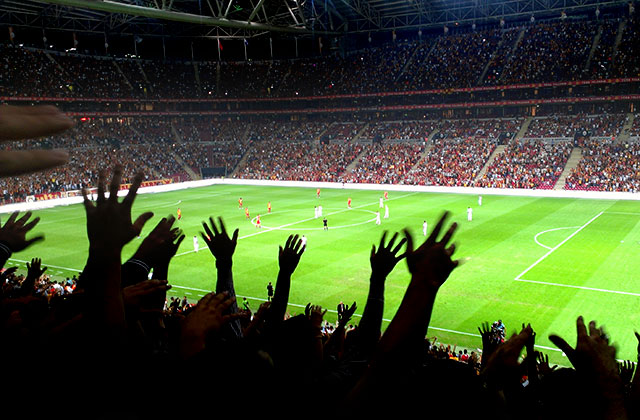Tottenham Hotspur first played on Tottenham Marshes in 1882 but with crowds steadily on the increase it wasn't long before a larger site was needed to host home matches, so Spurs moved to a site at Northumberland Park. This ground was only 100 yards down the road from White Hart Lane, the club's current home.
In April 1899, 14,000 fans turned up to watch Spurs play Woolwich Arsenal. The ground was no longer able to cope with the larger crowds and so Tottenham Hotspur F.C. needed to move to a new larger site.
The club decided that the ideal site was to be found on a Nursery plot behind the White Hart Inn on Tottenham High Road. The land was owned by a local brewery and the club agreed a tenancy, which guaranteed attendance's of 1,000 for first team matches and 500 for the reserve team matches. The club could easily match these numbers with an average crowd of 5,000, with no other club in the surrounding area.
The stand which was originally located in Northumberland Park was brought over and could accommodate 2,500 people. The ground was originally called the High Road ground. The opening day of the new ground saw a crowd of 11,000 pack in to see Spurs play QPR in the first competitive match. After the F.A. Cup victory in 1901 the club decided to increase the amount of terracing and the total capacity rose to 32,000. A share issue helped to purchase the ground's freehold for £8,900 in 1905. The area behind the Paxton Road end was also purchased for a sum of £2,600 and the capacity increased again to around 40,000. In 1909 the club opened their first major stand on the West side of the ground. The stand had 5,200 seats with a terraced paddock at the front for 6,000.
The last uncovered part of the ground was redeveloped in 1934 and the East stand was built at a cost of £60,000 with Barclays Bank helping to finance the development. The new stand was a standard double-decker placed above the original East terrace. The roof housed the press box, while the upper tier held 5,100 seats, with 11,000 standing places on the middle tier which became known as 'The Shelf', and further terracing on the lower tier for 8,000. With crowds increasing a record attendance of 75,038 was achieved in 1938 when Spurs played Sunderland.
After the war the notoriously muddy pitch was replaced and a few months later floodlights were installed on four corner poles. In 1957 the cockerel was removed from the West stand, and placed on the East stand in the following year. The floodlights were replaced with pylons in 1961 and in the following years each end terrace was redeveloped with seats being installed at the back of the stands. The ground now had 16,000 seats with a total capacity of 60,000.
In 1980 with the stadium becoming rapidly out of date compared with other football grounds in the country, Spurs set about building a new West stand which ultimately nearly bankrupt the club. The cost of the stand rose from the original price of £3.5m to a figure close to £6m and funds were used to develop boxes instead of building enough seats on this the most popular side of the ground. With only 6,900 seats this was clearly far too small for the main stand of the stadium. Instead of the planned 36 boxes, the board decided to increase this to 72 with two rows of boxes sandwiched between the upper and lower tiers. This added an extra £1m to the total development costs.
The stand was eventually opened in February 1982 with the capacity of the ground at 48,200. Unfortunately only two thirds of the boxes were sold and a sponsorship deal never occurred. When Irving Scholar took over the club in November 1982 he found debts of £5.5m. In 1984 a further £1.8m was spent on fitting offices and hospitality areas within the West stand. After the Bradford fire in 1985 safety work was carried out at a cost of £500,000, and in 1986 the Shelf's capacity was cut from 11,000 to 5,500 due to the small number of exits from the stadium.
With the all-seater deadline of August 1994 due to the Taylor report the club had to start making new plans for White Hart Lane. In mid-1992 the club installed seats on the lower tiers behind both goals, and this reduced the capacity to 33,500. In 1993 a new roof was built on the Paxton Road end with room being left underneath the roof for the eventual addition of another tier. In 1994 the last remaining section of the Shelf was seated and White Hart Lane became all-seated for the first time.
The next phase of construction saw a new South stand built at the Park Lane end, containing 8,517 seats. This cost £9m, and brought the capacity in mid-1995 to 33,157. Before the start of the 1997-98 season work began on the redevelopment of the North Stand. The North Stand's progress was ahead of schedule, and the lower tier has been open since November 1997. The North Stand holds over 10,000 fans, which set the total capacity of White Hart Lane to approx. 36,500.
